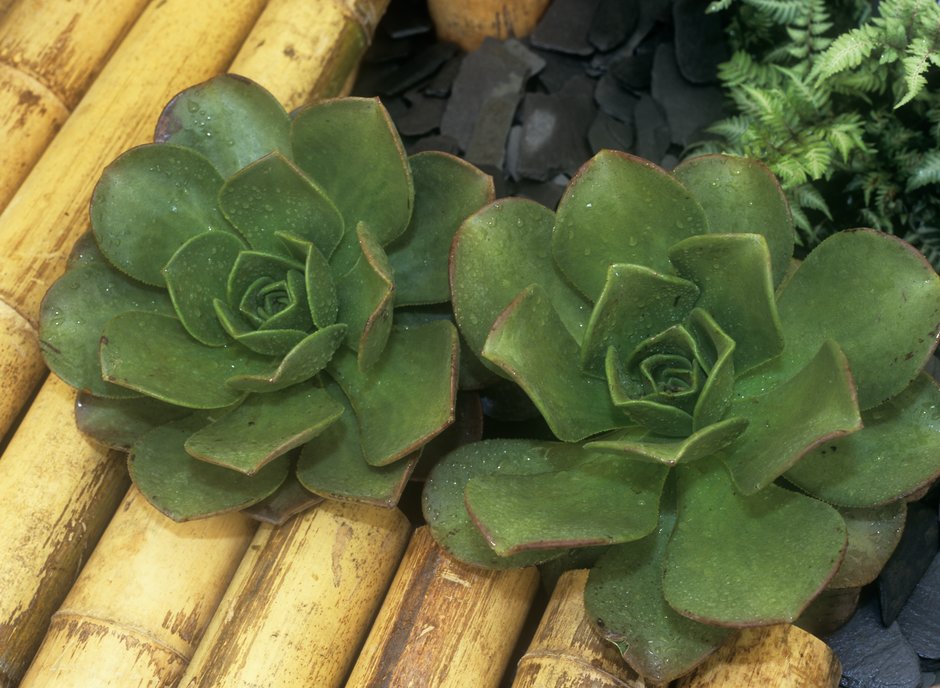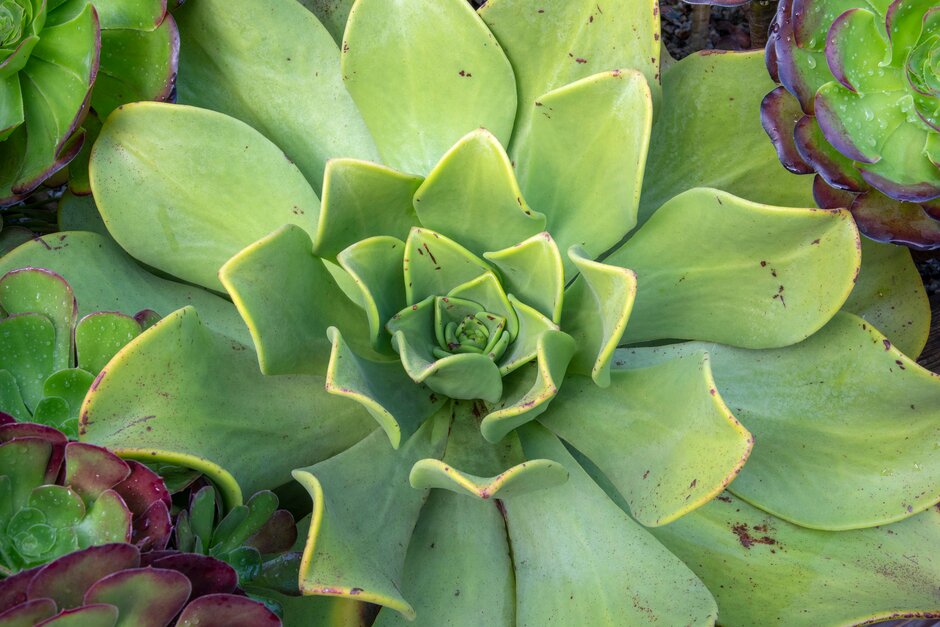Aeonium nobile
noble aeonium
An evergreen, monocarpicsucculent forminglarge rosettes 30-50cm across of thick, fleshy, olive green leaves; the leaves flush orange and red in bright light conditions. After several years, mature plants produce panicles of small, red, star-shaped flowers in spring held on a red stem up to 1.2m tall
Size
Ultimate height
0.5–1 metresTime to ultimate height
2–5 yearsUltimate spread
0.1–0.5 metresGrowing conditions
Moisture
Well–drainedpH
Acid, Alkaline, NeutralColour & scent
| Stem | Flower | Foliage | Fruit | |
| Spring | Red | Red | Green Orange | |
|---|---|---|---|---|
| Summer | Green Orange | |||
| Autumn | Green Orange | |||
| Winter | Green |
Position
- Full sun
Aspect
West–facing or East–facing or South–facing
Exposure
ShelteredDrought resistance
Yes Hardiness
H1CBotanical details
- Family
- Crassulaceae
- Native to GB / Ireland
- No
- Foliage
- Evergreen
- Habit
- Columnar upright
- Genus
Aeonium are evergreen succulents often of shrubby habit, with fleshy leaves in terminal rosettes on the shoots, and racemes or panicles of small, star-shaped flowers with numerous narrow petals
- Name status
Correct
- Plant range
- Las Palmas
How to grow
Cultivation
Grow under glass in a peat-free, loam-based potting compost with added extra grit. Water moderately when in growth, not at all when dormant. Apply a balanced liquid fertiliser 2 or 3 times in the growing season. See houseplant cacti and succulent cultivation for further advice
Propagation
Propagate by seed or by offsets
Suggested planting locations and garden types
- City and courtyard gardens
- Patio and container plants
- Sub-tropical
- Mediterranean climate plants
- Architectural
Pruning
No pruning required
Pests
Diseases
Generally disease-free
Love gardening
Sign up to receive regular gardening tips, inspiration, offers and more
View our Privacy Policy
Get involved
The Royal Horticultural Society is the UK’s leading gardening charity. We aim to enrich everyone’s life through plants, and make the UK a greener and more beautiful place.

